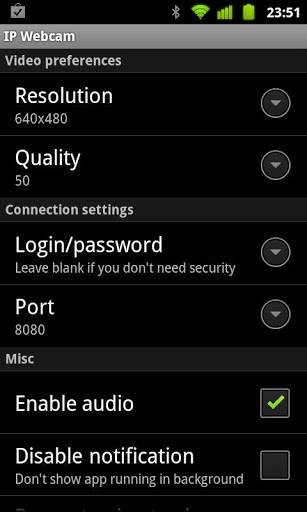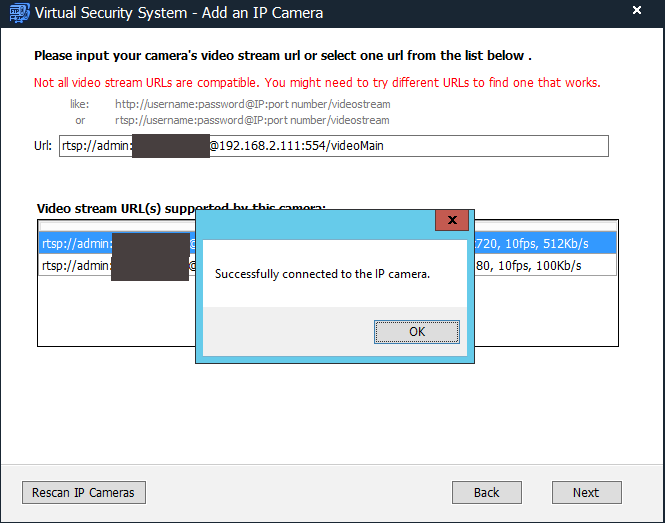
MJPEG IP cameras send a steady stream of JPEG images as motion video while H.264 IP cameras use H.264 video format offering better compression and video quality. The majority of IP cameras support either or both MJPEG (Motion JPEG) and H.264 video formats. What IP camera URL should I use?ĭetermine if your IP camera uses MJPEG or H.264 compression by looking at its list of features or tech specs. The name is used only for your IP cameras list - you may give your camera any name you want. The only mandatory field is Url, which is the actual address of your IP camera. Add IP camera manually via URLīy default, the fields are empty until an IP camera URL or IP addresses are entered. If Man圜am is unable to find your IP camera, try adding it manually via URL. While one might jump to the conclusion that the problem is arising from Reolink's server (which I believe uses LIVE555 Streaming Media v2013.04.08), I have it on the authority of Scott Lamb, a Google engineer who has demonstrated expertise in streaming video that the problem actually lies in FFmpeg's code.Not all cameras can be detected by Man圜am automatically. Having a real live camera providing an RTSP stream will help isolate where the problem may be arising. I tried running against the Bunny URL above and there were no such "monotonic" errors. While helpful, I'd like to have a real-time camera to test against.įor example, when running ffmpeg against my Reolink camera, I occasionally get: nal_unit_type: 1(Coded slice of a non-IDR picture), nal_ref_idc: 1 Application provided invalid, non monotonically increasing dts to muxer in stream 0: 1770 >= 1770 nal_unit_type: 1(Coded slice of a non-IDR picture), nal_ref_idc: 1 nal_unit_type: 1(Coded slice of a non-IDR picture), nal_ref_idc: 1 Application provided invalid, non monotonically increasing dts to muxer in stream 0: 1773 >= 1773 nal_unit_type: 1(Coded slice of a non-IDR picture), nal_ref_idc: 1 nal_unit_type: 1(Coded slice of a non-IDR picture), nal_ref_idc: 1 nal_unit_type: 1(Coded slice of a non-IDR picture), nal_ref_idc: 1 Application provided invalid, non monotonically increasing dts to muxer in stream 0: 1776 >= 1776 nal_unit_type: 1(Coded slice of a non-IDR picture), nal_ref_idc: 1 nal_unit_type: 1(Coded slice of a non-IDR picture), nal_ref_idc: 1 nal_unit_type: 1(Coded slice of a non-IDR picture), nal_ref_idc: 1 Application provided invalid, non monotonically increasing dts to muxer in stream 0: 1779 >= 1779 nal_unit_type: 1(Coded slice of a non-IDR picture), nal_ref_idc: 1 frame= 1518 fps= 26 q=-0.0 size=N/A time=00:00:59.64 bitrate=N/A speed=1.04x nal_unit_type: 1(Coded slice of a non-IDR picture), nal_ref_idc: 1 nal_unit_type: 1(Coded slice of a non-IDR picture), nal_ref_idc: 1 nal_unit_type: 1(Coded slice of a non-IDR picture), nal_ref_idc: 1 Application provided invalid, non monotonically increasing dts to muxer in stream 0: 1782 >= 1782 nal_unit_type: 1(Coded slice of a non-IDR picture), nal_ref_idc: 1 nal_unit_type: 1(Coded slice of a non-IDR picture), nal_ref_idc: 1 a camera's streaming feed of h264 encoded bytes.

It may be that the decoding time stamp (DTS) and presentation time stamp (PTS) (see tutorial) do not reflect real-time disparities that might arise when streaming a file.


#Videostream url for ip cam pro mp4#
The problem with this is that it is a file, an mp4 format, that is being streamed.


 0 kommentar(er)
0 kommentar(er)
